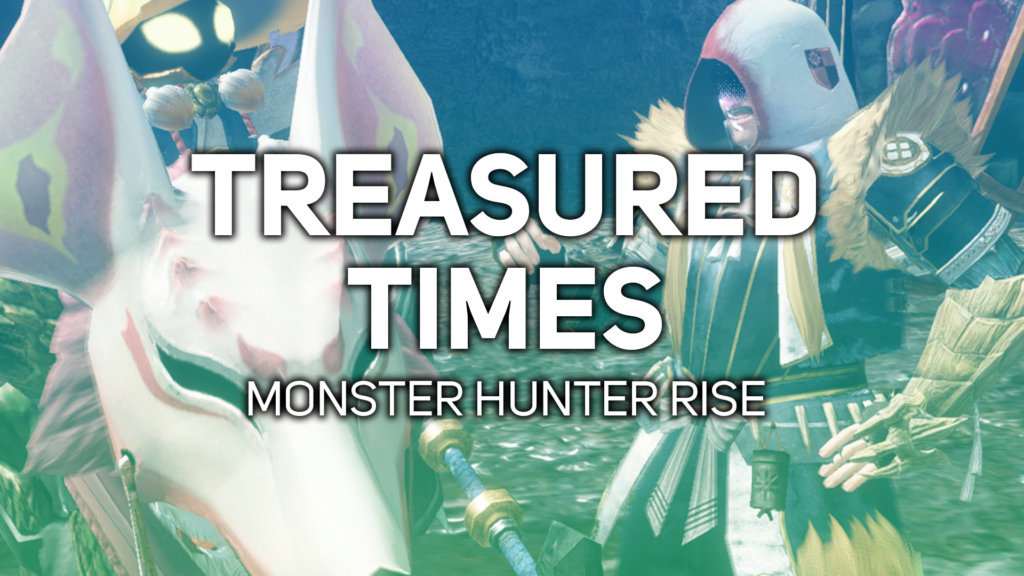This was originally meant to be a video review of Monster Hunter Rise, but it might be time for my capture card to go to the big bin in the sky. See ya, old pal, it was a nice five-year run. You can listen to me read this to you in the raw audio format above.
There are many games like Monster Hunter, but there are seldom few that are like Monster Hunter.
Wherever you look in the modern video game landscape, loot prevails. Whether you’re deeply invested in Path of Exile, Destiny, hell, the one person still playing that Avengers game, loot seems to be the one system to have manifested itself as the asbestos lining of a vast quantity of video games in recent times.
The thing that makes Monster Hunter’s loop of loot collection is not only collection of the right materials to craft the armour you’re after, but how important it makes the titular monsters and in turn, the equipment it bores.
Monster Hunter as a series dates back to the PS2, as some weird fringe Capcom game that exploded in Japan once it hit the PSP (constant confusion over Japanese sales charts featuring the continued massive sales of the PSP between 2007 and 2010) and once it made the jump to the far more popular Wii and 3DS, it just kept going.
Though once the 3DS versions came to a close with the fourth main entry and two Generations titles, it seems Capcom took stock of the Western view and attempted to mould Monster Hunter into something a little more palatable for the ever-widening audience.
You can’t escape From it
I have zero doubts that the rise of Monster Hunter in the west also coincided with the mindset that westerners don’t just want western games, but games from different backgrounds that are more easily accessible. You only have to look at Dark Souls, Yakuza and the dense amount of visual novels that have become mainstays in the industry for the foreseeable future. The difficulty, different methods of approach to interaction and genuine interest in learning a game are now normal, bringing companies like Capcom out of a weird dark age where they attempted to aim everything at the west, rather than adapt their products for everyone.
This also helped facilitate the booming Battle Royale genre, with games moulded from the blood of ARMA are now key staples and battlegrounds for how the app economy and industry even works.
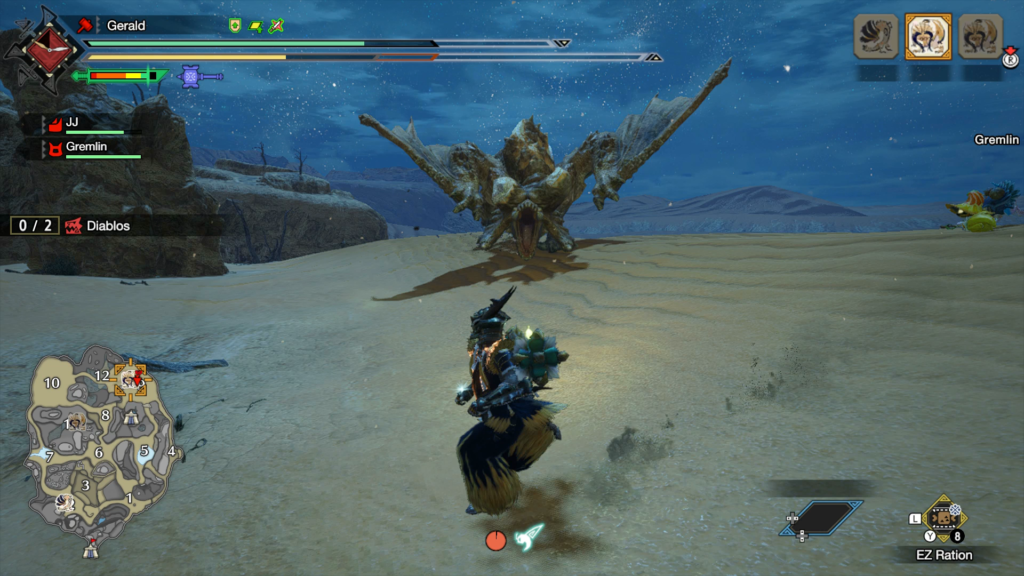
The biggest success from Japan outside of From Software and their Souls series is Capcom and Monster Hunter World.
Monster Hunter World was their big foray into updating the series. After about 13 games in the series, you could absolutely begin to see the rough edges. Mechanics and systems invented to work around the hardware limitations of the PS2 and PSP, which also aided in a smooth-running game on 3DS, were no longer really something they could get away with, especially seeing as they were jumping to HD consoles.
Systems like a split map into segments that would require a load to travel between, monsters having to be ‘paintballed’ to track them easily through the map and a limited amount of sharpening whetstones that are absolutely required to be efficient in the long, drawn-out battles, were just ageing the game.
Every Monster Hunter is dense. Like, multiple systems to manage and learn each game, with more being added or removed between titles to make room for more stuff. What World did is nothing short of a miracle.
World Changer
It not only kept the essence of Monster Hunter, right down to the esoteric way it handles some combat in the game, but it ultimately made a Monster Hunter game anyone could pick up and play with little time between learning and getting into the thick of it.
Gone was the segmented map, instead a fully detailed and seamless map that got vertical. It still had segments, but it still made sense for those who utilised them in multiplayer and such. Combat was only very lightly eased up, making it harder to learn weapons accessible and deepening some aspects of simpler weapons with new move sets. A breadcrumb trail would lead you to monsters so that players who have no sense of navigation – me – wouldn’t be wandering around lost for the increasingly short time of 50 minutes allotted to each mission.
World was followed up with an expansion that added armour to get players up to speed, then quickly made it very shit as soon as you hit the expansion, forcing you back into the loop. This was then followed by Monster Hunter Rise, a current Switch exclusive and a further iteration on what World and the previous games had set up.
Rise up!
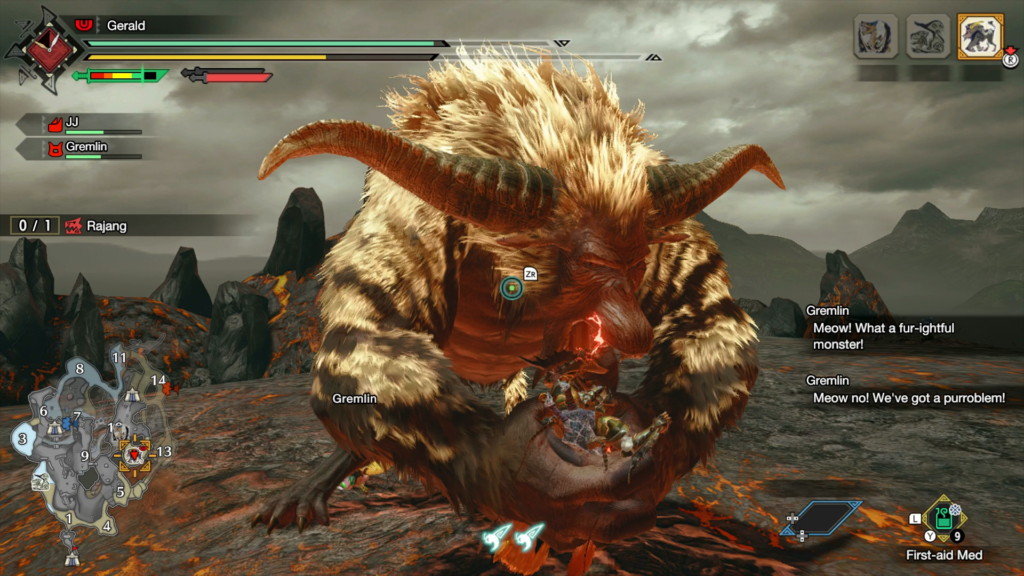
As with every other Monster Hunter game, there’s a singular focus on something to defeat or beat. This time around, instead of a singular beast, it’s a force of nature. The Rampage is happening and to stop the village from being destroyed, you’ll have to quash any nuisances, fulfil tasks for the locals and build up your armoury and skills to best the rabid beasts.
The loop works like this:
You get a quest, you choose the gear that’ll give you the best advantage, eat and hunt. You’ll then hopefully succeed, carve up the dead creature and utilise the bits you cut off to invest in something new.
Rise continues World’s great additions like making the maps you explore a seamless environment, but also begins to pull back on certain things it introduced in World. You’ll no longer have a slingshot at your disposal, returning the game to a few of its roots with how you dispense flash bombs and the like. The layout of the village harkens back to those portable games and the overall look is a lot more… well it’s more appropriate for the Switch.
Monster Hunter Rise is filled with streamlined design choices. Food that gives you massive buffs is now more controlled but has a percentage chance of activation. Getting around the world is made far easier with the introduction of Palamutes, secondary buddies who’ll join you in combat alongside your Palico.
With these two and the newly introduced wirebugs, which also aid in getting around the world and making incredible spectacles in combat, Rise is consistently edging forward into a faster-paced game than before.
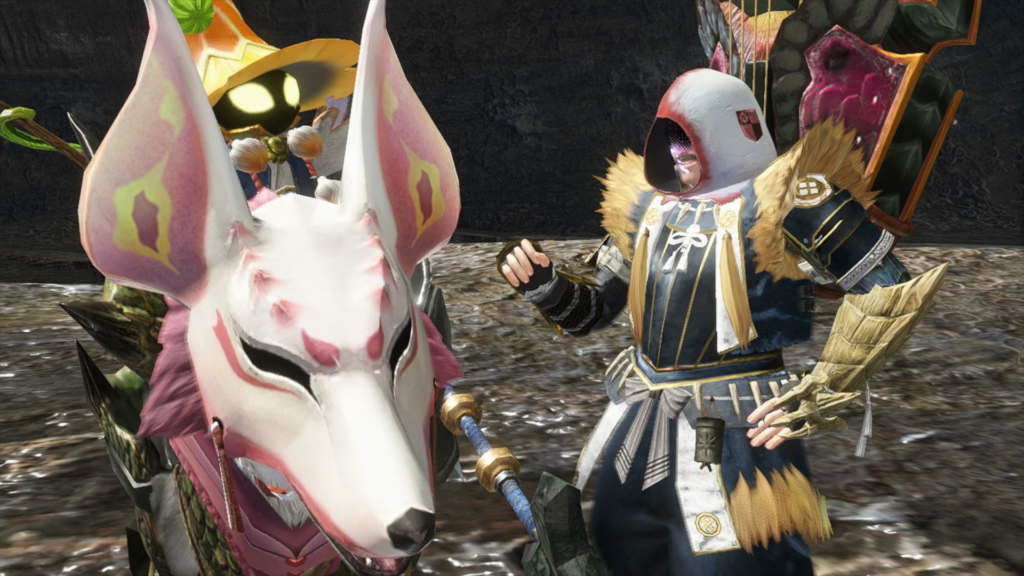
These streamlines don’t detract from Monster Hunter’s core at all. In fact, they only seem to facilitate falling into the hole even faster. I think one of my favourite additions is a smaller village, meaning time taken from one place to another on foot is minuscule, or I can just snap about the map with a couple of button presses.
Another would be hitting X while in the decorations menu, to swap from the names of the decorations – which are sometimes a bit obscure – to what they actually provide.
It’s these little changes and tweaks to the overall formula of the game that just make life easier. Monster Hunter has gone from a game of tedious micromanagement to kinda fun micromanagement.
Here’s the menu
I mean, outside of the short to full-on 50-minute excursions throughout the game, you’ll spend a lot of time just managing systems that the game has either introduced or brought with it. Armour and weapon crafting require keeping tabs on which hunts you need to repeat, while the Meowcenaries – autonomous material-gathering – need to not only be set to go every few quests to maximize their usefulness, but the buddies you’ll be sending also need training.
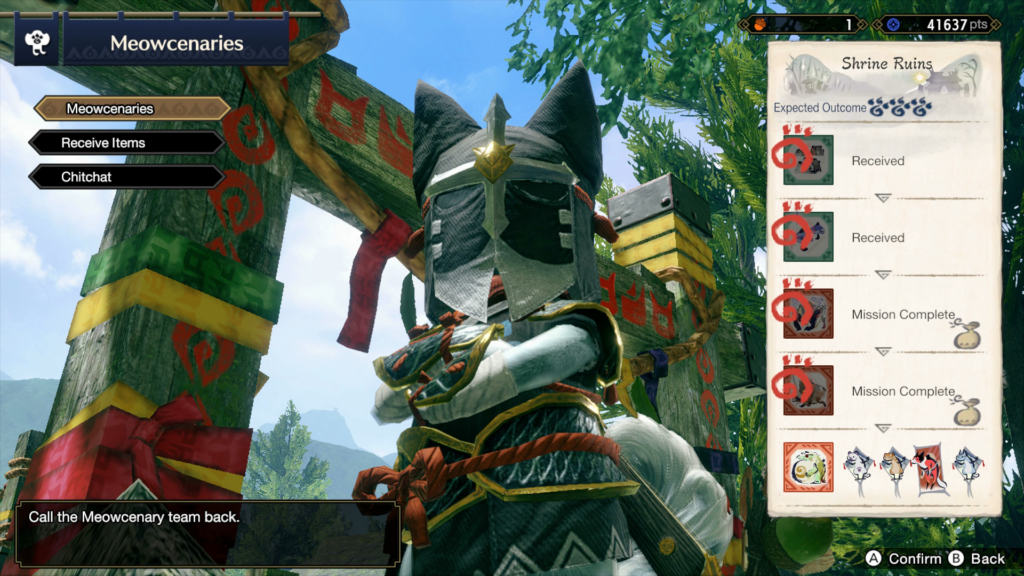
Which, the ones you do train, won’t all go out on their own missions, as you’ll send up to three in submarines to go gather useable items or trade out in the wider world with The Argosy.
Even the shop has things you need to manage as well, as you’ll eventually unlock the Melding Pot, which allows you to craft talismans in trade for materials. This has five modes, meaning that if you want better stuff, you’re going to need to go on quests and at some point, recycling them becomes an option, so you’ll have to go on quests to generate more of them – as they only complete per quest done – to turn lesser talismans into better ones.
BUT LET’S NOT FORGET ABOUT THE EQUIPMENT. Are your stats right? Are you resistant enough to thunder that you won’t get thunderblight and even then, are you going to be tough enough to even go against the beast you’re currently trying to skin so that you don’t die immediately?
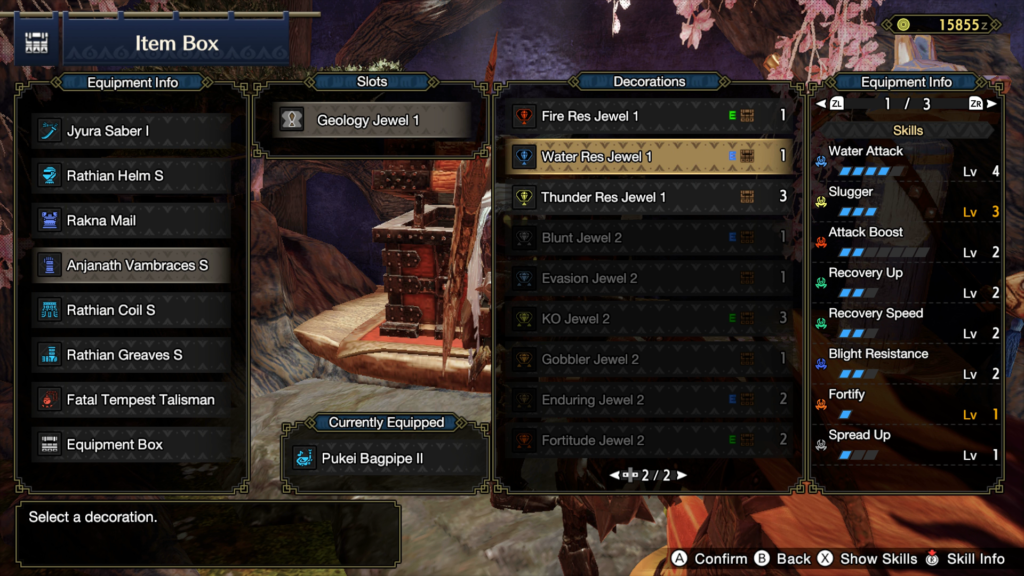
Monster Hunter Rise, much like the prior World, eases the tedium, but it straight up still is Monster Hunter. Every quirk, every little bit that brought the charm in the original games is still there. There’s a sense of humour to everything it does, while still being one of the most demanding games to ever find success.
However, if we’re talking tedium, Rise does bring with it something based on previous games’ in a more fleshed out fashion and it’s for the worse.
Rampage? Rampage off.
Monster Hunter Rise focuses around The Rampage, an event in which monsters storm where the humans are located, laying waste to everything in a primal urge. There’s an underlying mystery to it, but whatever. The main thing here is that The Rampage quests, which are just tower defence, suck shit.
Overly long, needlessly complex in spots and utterly boring, Rampages luckily only seem to be required a mere handful of times before becoming side pieces with super difficult beasts being locked behind them until future updates.
Partially I think they’re bad because I suck at them, but also, I think there’s a level of randomness and traditional Monster Hunter bullshit that the game seemingly has smoothed over in Rise that comes out full force.
Instead of a management screen or zoomed out view to quickly change or bolster defences, you have to physically get to them (most on raised platforms), so it’s a lot of waiting for wirebugs to recharge. Then when it does begin, you’ll be flung off or blown away by monsters because you didn’t immediately block on an attack, resulting in total destruction of the defences for a short time, rendering everything but the automatic ones utterly useless in most cases.
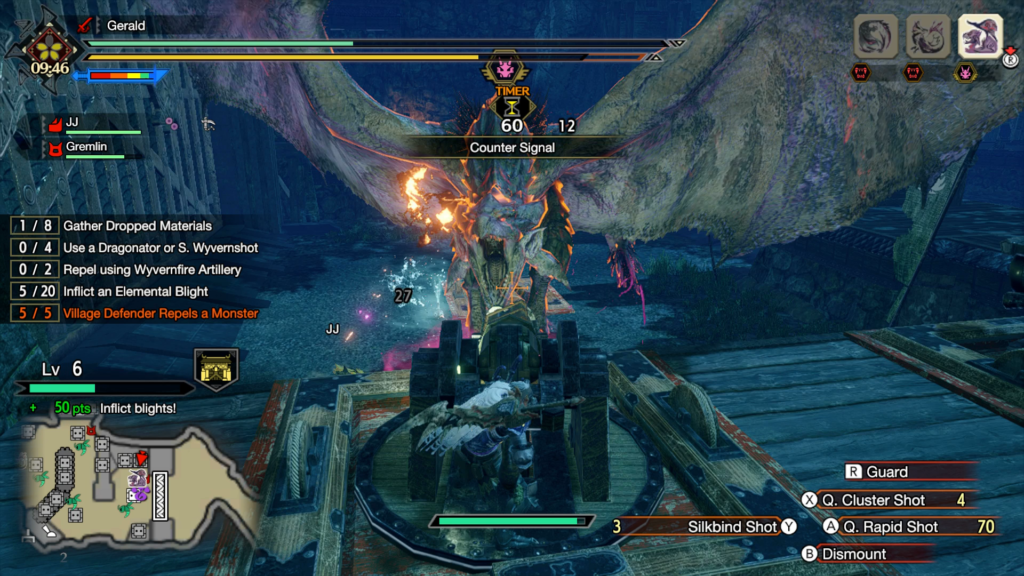
Every monster bar the Apex – your main target – is weaker than usual, turning these beasts that pose genuine threats outside of The Rampage into weird fodder enemies, where they’re not quite as weak as the fodder on regular quests, but not quite as difficult to deal with as the Apex beast. The issue here is that these monsters still act the same. The same annoyances, tactics, etc. that you’d find when hunting them come out in spades here, especially when there’s suddenly four or five different things happening at once, leaving you utterly confused as to what the fuck is going on.
I never had a good time with these quests, mainly because I think they stretch the Monster Hunter formula and design in such a way that it was never supposed to go. There are frantic quests and butt-clench moments, but there’s nothing as mind-bogglingly asinine as immediately losing everything you’ve worked to defend because the big bad has suddenly shown up and you obviously need a challenge.
These rampage quests made me hate the monsters involved, whereas the franchise as a whole has done careful work to ensure that even though they can cause irritation, you’re never exactly left in a bad mood on failure. I mean, other than time, they’ve not caused you to lose anything. The Rajang with its wild mannerisms is something to learn and overcome, which every single monster that’s graced a Monster Hunter has at its very essence.
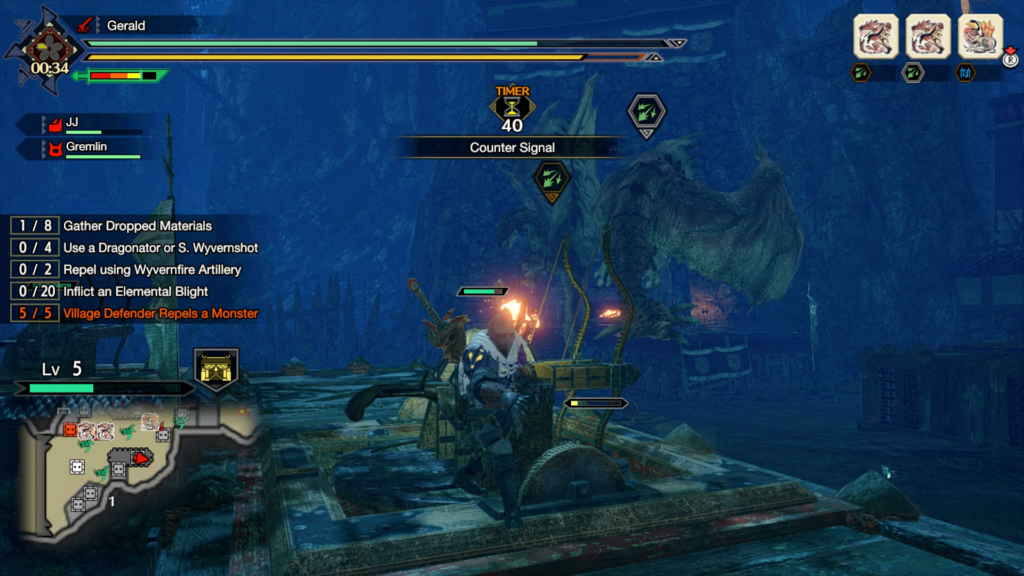
This transcends the numbers game that you can play, but just at a fundamental level of learning what the developers have done to make each monster unique in its own special way.
If you were a reductionist, each monster is like a ‘boss’, with patterns and specific exploits that you can take advantage of, but with such attention to detail of making them feel like wild beasts that need to be culled down for various reasons, battles become this almost personal onslaught, especially when things begin to get desperate for the both of you.
A monster crawling away, tired and battered from the day-long fight, you, potionless and hoping to god this next round does away with them, it’s something you don’t get from many other games, especially those within the same loot bracket.
Your source of reward has a personality, a history with you, personally. You see them so often, you begin to buttheads like old friends who gel like oil and water.
Special in its own way
But, through all of this, through the menus, the grind, the rampages, there’s something that glistens through. The reason Monster Hunter is so damn special. Its loot.
I don’t think I’ve ever played a game where the loot means so much.
Way back in 2013, while Destiny was being shown off to the press for the first time, they spoke about how they wanted each weapon to tell a story. Forcing these mythos onto weapons that ultimately didn’t mean anything once the actual game launched.
Games like Path of Exile or Diablo, you’re restarting so often that at some point major loot drops don’t really mean anything other than stat buffs that you’ll eventually just toss aside in favour of the new season.
New to the loot world, Battle Royals, like Warzone, Apex Legends and Fortnite, the loot means nothing as it can be all lost upon death in a matter of moments, it’s just simply something to do in this expanded and alternate multiplayer deathmatch. You won’t remember a 5x scope in the next match.
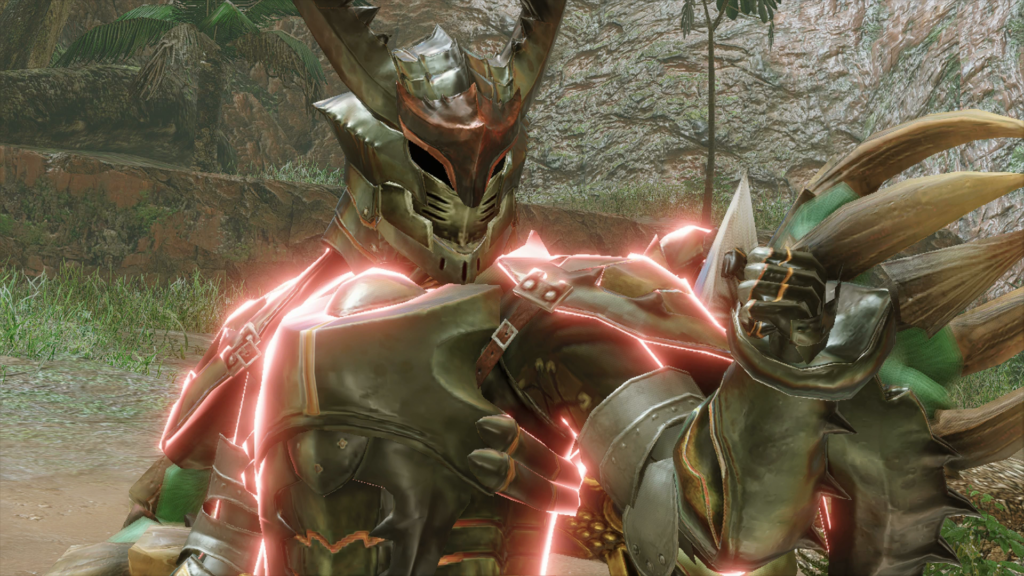
In Monster Hunter, loot not only means access to something you’re gunning for, but it ultimately has a staying power. The bits you hack off of a monster at the end of every quest and earn as a reward all mean something because it’s your next step to besting the game.
A person in full Elder Dragon regalia immediately does what Bungie wanted originally with Destiny without any effort or massive PR pandering, as you know the story behind it already. Even on sight, with no knowledge, it looks special.
Armour and weapons aren’t immediately tossed aside, with some armour pieces being with you right until the very end, simply because they can do what something else can’t. Need more ore and materials? The super low-level leather armour actually allows you to collect a lot more, so maybe put in the work to upgrade it to withstand a little more here and there?
Weapons become the basis of future weapons. Even then, there’s a level of connection with the weapons outside of a stat basis. You begin to learn the different quirks to each weapon, what you need to do to be successful with it. While I began branching out a little bit, I still held true to the Hammer and its cousin, the Hunting Horn, because I had learnt what makes them tick.
Staying Power
In other loot games, you might fire off two shots instead of full auto with a more powerful gun and then in the next couple hours or the same mission, you’ll ditch the loot in favour of something else.
In Monster Hunter, everything has a staying power. Sure, older weapons get turned into something else, but you’ve dedicated your time to not only gathering the materials required for this level six sword or whatever but also how this particular brand of sword works in your favour.
Monster Hunter as a whole operates differently from other loot games. While Rise continues to smooth and refine the more esoteric parts of it, it ultimately still has that same personality at its core.
A personality that is actually that your time and effort are rewarded, in a genre that recently has mostly distanced itself from this.
Listen to me talk about Monster Hunter Rise a little more off the cuff on these select podcasts!
